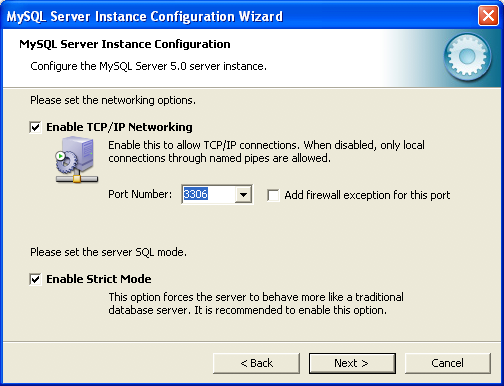
- #Install mysqldump windows full#
- #Install mysqldump windows zip#
- #Install mysqldump windows download#
Create a data directory as I mentioned in the above my.ini file.# set datadir to the location of your data directory Create my.ini file under MySQL root directory.So the MySQL root directory is C:\mysql-8.0.xx, where xx is the any version from 17 to 26.
#Install mysqldump windows zip#
#Install mysqldump windows download#
Make sure to download the one that is under Other Downloads: Windows(x86, 64) Zip Archive.
#Install mysqldump windows full#
There may be other files that you should take into account when performing a full backup, such as files that may have been uploaded to your application. NOTE: The steps previously described will only back up the data contained inside your databases. This operation could take some time depending on the database sizes. To back up all the databases, use this command instead: $ mysqldump -A -u root -p > backup.sql $ mysqldump -u root -p bitnami_app > backup.sql

In this example, the database is named bitnami_app replace this with the name of the database you wish to export. To back up just the application database, create a dump file using the mysqldump tool. If present, the installer uses MariaDB and if not, it uses MySQL.ĭepending on which database server (MySQL or MariaDB) is used by the installation, use the appropriate guides in our documentation for database-related operations. Windows native installer users can identify which database server is used in the stack by checking for the presence of the installdir/mariadb directory. Linux and macOS native installer users can identify which database server is used in the stack by running the command below: $ test -d installdir/mariadb & echo "MariaDB" || echo "MySQL" On account of these changes, the file paths and commands stated in this guide may change depending on whether your Bitnami stack uses MySQL or MariaDB.

NOTE: We are in the process of modifying the configuration for many Bitnami stacks. Learn more about the Bitnami stack environment and about OS X VMs. On OS X VMs, the installation directory is /opt/bitnami and OS X VM users can click the “Open Terminal” button to run commands. Before running the commands shown on this page, you should load the Bitnami stack environment by executing the installdir/use_APPNAME script (Linux and MacOS) or by clicking the shortcut in the Start Menu under “Start -> Bitnami APPNAME Stack -> Application console” (Windows).


 0 kommentar(er)
0 kommentar(er)
